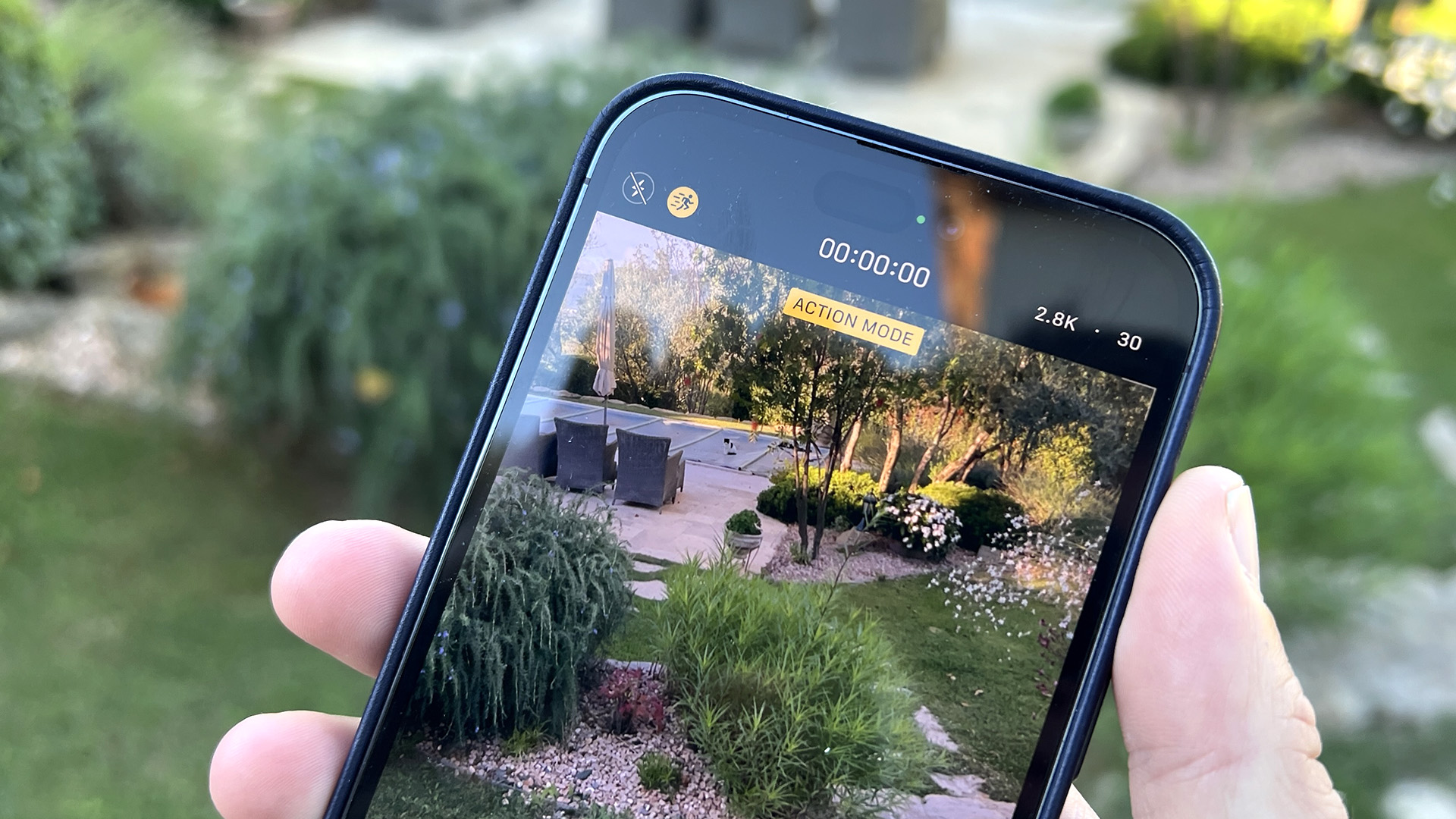

There are many reasons you might consider buying the new iPhone 14 Pro or iPhone 14 Pro Max. If you shoot video though, the biggest reason is the new Action Mode. While it's not a headline feature, it provides some exceptional stabilisation that puts it on par with some action cameras.
The feature makes use of the iPhone 14 Pro / Pro Max's new 48MP sensor on the main camera but works on all three of the rear cameras, including the 2x crop on the main camera. This uses a form of digital stabilisation to provide a smooth shake-free image, even in extreme situations.
It achieves this by using the space around the video crop as a buffer, recording beyond the normal boundaries and using this extra information. It means that the area of the sensor being used for the final shot will constantly change to compensate for your hand movements. Similar to the Hypersmooth mode on the best action cameras such as the GoPro Hero 11 Black.

Outer red line is a 4K video crop, inner red line is the 2.8k crop. The blue lines are the recorded image as it moves to compensate.
The maximum size of the video in Action Mode is smaller than in regular video – you are limited to just 2.8k (2816x1584) rather than 4K (3860x2160). This helps to give more space around the frame. You can see this in the diagram above – the outer red line is the regular 4K crop on the sensor, while the inner red line is the 2.8k sensor.
The main camera on the iPhone 14 Pro does already include an optical image stabilisation system, which adjusts the lens to help stabilise. However, the Action Mode is a lot more effective. I tried this out by taking the phone with me on a run around a village. The regular 4K video appears still very shakey, as I run. However, with the Action Mode engaged, the image appears really stable, as if gliding down the road.
Take a look at the footage comparison below to see what I mean. Video shooters also benefit from a new higher resolution (4K) in Cinematic Mode and a smoother zoom, when swapping between the lenses.
Get all the latest news, reviews, deals and buying guides on gorgeous tech, home and active products from the T3 experts

As T3's Editor-in-Chief, Mat Gallagher has his finger on the pulse for the latest advances in technology. He has written about technology since 2003 and after stints in Beijing, Hong Kong and Chicago is now based in the UK. He’s a true lover of gadgets, but especially anything that involves cameras, Apple, electric cars, musical instruments or travel.
